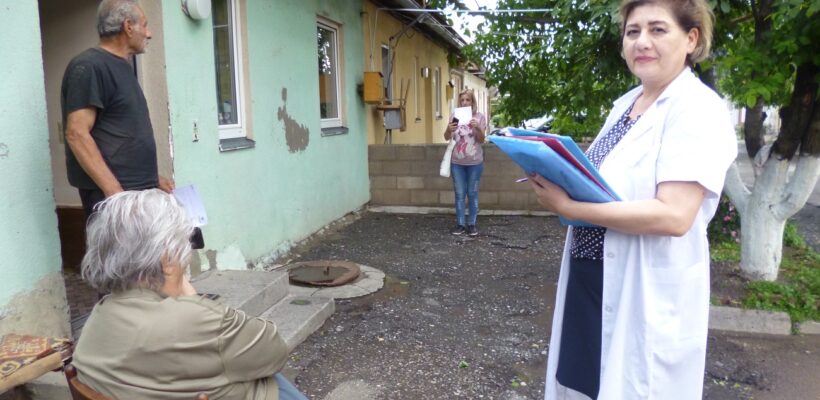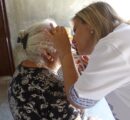
AUA’s Meghrigian Institute Publishes on Cataract Blindness in Armenia
2 min readYEREVAN, Armenia — The American University of Armenia (AUA) Garo Meghrigian Institute for Preventive Ophthalmology (Meghrigian Institute) at the Avedisian Onanian Center for Health Services Research and Development (CHSR) of the Gerald & Patricia Turpanjian College of Health Sciences (CHS), published a new article titled “Cataract Blindness in Armenia: The Results of Nationwide Rapid Assessment of Avoidable Blindness (RAAB).” The research article appeared in the Journal of Ophthalmic Epidemiology, an international peer-reviewed journal that focuses on eye and vision health in the fields of epidemiology, public health, and the prevention of blindness. The study was authored by Aida Giloyan (MPH ’07), M.S.; Naira Khachatryan (MPH ’97), M.D, DrPH; Ala Paduca, M.D.; Hans Limburg, M.D., Ph.D.; and Varduhi Petrosyan, M.S., Ph.D.
This is the second paper written based on the nationwide Rapid Assessment of Avoidable Blindness. The article focuses on assessing the prevalence of cataract blindness, the coverage for cataract surgery and its effectiveness, the post-surgery visual outcome, and barriers to cataract surgery among individuals aged 50 years and older in Armenia.
The study utilized the RAAB methodology, developed by Dr. Limburg at the International Center for Eye Health, London School of Hygiene & Tropical Medicine. Since its inception, this methodology has been used in over 300 surveys in more than 80 countries. It offers valuable insights for healthcare policymakers and decision-makers, aiding them in formulating targeted interventions to enhance overall eye health nationwide. According to the Global Burden of Disease study, cataract was the first leading cause of blindness among 15.2 million cases and the second leading cause of moderate and severe visual impairment among 78.8 million cases globally of people aged 50 years and older in 2020.
This study by the AUA Meghrigian Institute included 2,258 individuals aged 50 years and older randomly selected from 11 provinces of Armenia in 2019. The prevalence of blindness caused by any reason was 1.5%, of which 36.4% had bilateral blindness due to cataract. The coverage for cataract surgery and its effectiveness, measured against a surgical threshold of vision <6/12, was 55.1% and 24.4%, respectively. After cataract surgery, a good outcome was observed in 43.7% of eyes, a borderline outcome in 37.2%, and a poor outcome in 19.1%, falling short of the World Health Organization’s recommendation. The main barriers to cataract surgery were cost, need not felt, or fear of surgery.
The prevalence of cataract blindness in our study was higher compared to high-income countries. The findings suggest the urgent need to update the National Strategic Plan to prevent blindness in Armenia, particularly focusing on improving the quality and coverage of cataract surgery.
The AUA Meghrigian Institute conducted the nationwide RAAB survey with financial support from the Lions Club International Foundation (LCIF).
The AUA Turpanjian College of Health Sciences works actively to improve population health and health services in Armenia and the region through interdisciplinary education and development of health professionals to be leaders in public health, nursing, health services research and evaluation, and health care delivery and management.


